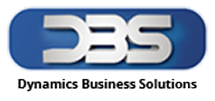Fact: More than 60% of large GCC employers cite integrated systems as the top factor in reducing payroll errors and compliance risk.
For multinational firms, that number speaks to scale and control. Large teams need a single, secure platform that centralizes employee master data and preserves audit trails.
Dynamo Payroll is built to work inside microsoft dynamics 365 finance and operations, unifying payroll and human capital tasks so companies can standardize processes across countries.
The solution automates attendance, overtime, incentives, and statutory calculations while supporting visa and expat administration. This reduces manual steps and speeds every pay cycle.
Executives get clearer forecasting and analytics through Microsoft technologies, and employees gain self-service that lowers help-desk demand without sacrificing governance.
Learn how Dynamo integrates with microsoft to help GCC enterprises scale operations and maintain compliance across borders.
Key Takeaways
- Enterprise-grade platform centralizes employee records and reduces duplicate data entry.
- Automates high-volume transactions—attendance, overtime, incentives—accurately every cycle.
- Built-in expat and visa features lower administrative load for global teams.
- Integrated analytics improve payroll cash-flow visibility and executive decision-making.
- Employee self-service boosts experience and cuts support requests while keeping controls.
Enterprise-grade payroll and HR built for Microsoft Dynamics 365 Finance and Operations
Handling peak pay runs across regions calls for an architecture built for performance and resilience. Dynamo delivers an elastic platform that scales during the busiest cycles, so companies keep consistent throughput across business units and locations.
Scalable performance: The system expands capacity for high concurrent usage and large batch runs, preserving response times for thousands of employee records.
Security and governance: Role-based access, separation of duties, and auditable workflows align with enterprise controls so finance and management teams operate with confidence.
Cloud-based architecture for scale, security, and performance
The solution is built to interoperate natively with Microsoft dynamics 365 finance and operations, enabling direct financial posting to cost centres and dimensions. That reduces reconciliation time and tightens financial controls.
Modular management features consolidate disparate tools into a single platform, improving operational efficiency and reducing IT overhead. Continuous updates mean new features and regulatory changes arrive without disruptive upgrade projects.
- Enterprise data flows with validation and error handling for end-to-end processing.
- Configurable organizational hierarchies and approval chains to mirror real operations.
- Integration with Microsoft analytics to turn workforce data into actionable insights.
Learn more about integration benefits at how Dynamo connects with Microsoft systems to scale operations and reduce manual work.
Core capabilities that streamline HR, payroll, and employee self-service at scale
Managing thousands of workers requires a unified platform that ties personnel data to time and compensation rules. Dynamo centralizes complete staff records, including dependents and family details, so downstream pay calculations reference a single source of truth.
Unified employee administration
Complete personnel records reduce duplicate entries and ensure accurate tax and benefit treatment. Centralized data improves auditability and speeds reporting across Microsoft dynamics 365 environments.
Time, attendance, and incentives
Time capture and overtime rules are configured centrally to mirror enterprise policy. Performance-linked incentives flow into validated accruals, improving accuracy in high-volume processing.
Leave, expenses, and deductions
Automated leave and expense workflows align each transaction with labor requirements and tax rules. This lowers manual corrections during each pay cycle.
Employee Self-Service portal
The secure portal lets users submit requests, upload or retrieve documents, and view real-time pay information—cutting administrative load and boosting transparency.
| Module | Primary Benefit | Key Feature | Impact |
| Employee Admin | Single source of truth | Dependents & records | Fewer errors |
| Time & Attendance | Consistent rules | Overtime engine | Accurate pay |
| Compliance & Taxes | Regulatory alignment | Company tax calc | Audit-ready reports |
| Expat Admin | Visa tracking | Permit renewals | Reduced risk |
For details on integration with Business Central, see HR-payroll integration with Business Central.
Seamless Microsoft Dynamics integration and faster go-live
When employee records and time data flow natively into ledgers, go-live timelines shrink and risk drops.
Native integration with Dynamics 365 FO and Business Central financials
Direct links to dynamics 365 and Business Central align posting with cost centres, dimensions, and GL structures. This reduces reconciliation work and speeds month-end close.
Leverage Power BI, workflows, and email notifications for automated processing
Interactive dashboards in Power BI deliver compliance reporting and operational insight. Configured workflows and automated email alerts route approvals and exceptions to the right teams, cutting manual handoffs.
Smart integrations to import time worked, leave taken, and employee data
Standard connectors for Business Central, NAV, and Finance & Supply Chain let teams import legacy time, leave, and staff records. Historical information is preserved to minimize disruption during transition.
| Capability | Benefit | How it works | Result |
| Native finance posting | Faster close | Map to cost centres & GL | Cleaner reconciliations |
| Power BI reports | Compliance visibility | Interactive dashboards | Better audits |
| Standard connectors | Lower IT risk | Prebuilt patterns for Business Central | Shorter projects |
| Phased rollouts | Operational continuity | Region-by-region deployment | Smoother adoption |
End-to-end integration improves data quality and ensures final postings match source transactions. A shared Microsoft platform also simplifies security, governance, and user adoption across the business.
See how Dynamo accelerates implementation and reduces TCO in this guide: simplify HR and payroll operations with Dynamics 365 Business.
Payroll Software, HR Software, Cloud Payroll Software, Dynamics 365 FO
Accurate pay calculations cut rework and keep finance teams focused on strategy. Dynamo delivers precise processing that applies organization rules for overtime, allowances, deductions, and benefits to reduce errors and costly corrections.
Precision in calculations and audit-ready reporting
Built-in reporting provides standardized outputs and finance-ready summaries. That simplifies statutory filings and supports company-specific tax scenarios across multiple countries.
Advanced formula builder and flexible configuration
The advanced formula tool lets administrators create complex tax and multi-allowance rules without custom code. This speeds response to regulatory updates and collective agreements while lowering maintenance.
- Consistent application of rules across locations to reduce variance and exceptions.
- Streamlined integration with Microsoft dynamics 365 business and Business Central to cut reconciliations and cycle time.
- Employee self-service empowers users to view pay, retrieve documents, and submit requests—reducing tickets and improving transparency.
“A single, configurable platform removes system handoffs and helps teams close reliably each month.”
Learn more about integration patterns when exploring the benefits of cloud payroll with 365 Business Central.
Conclusion
Dynamo delivers a single Microsoft-aligned platform that simplifies complex pay and people processes for large enterprises. Built for Microsoft dynamics 365 finance and operations, the solution unifies payroll, human capital, and employee self-service into one secure system that scales to thousands of users.
Enterprises gain accurate processing, configurable rules, and statutory tax capabilities that reduce risk and speed month-end close. Native integration with dynamics 365 and Business Central shortens time to value and improves collaboration between finance, management, and people teams. Employees get transparent access to requests, documents, and pay information through a protected portal, lowering administrative load.
Proven migration tools preserve historical data and ease transitions from legacy systems. Contact the team for a tailored demonstration to assess fit, configuration options, and a phased rollout aligned to your business goals.
Dynamics Business Solutions (DBS) is certified Microsoft Dynamics partner in UAE, we take pride in our ability to develop and deploy the right business solution that matches global client’s requirements. DBS has developed in-house state of the art solutions for HR and Payroll, Dynamo and DynaPay on top of Microsoft Dynamics 365 FO and Business Central respectively. These solutions are catering the all business needs of HR and Payroll departments. We provide best services and support to our clients.
To know more, speak to our expert at Dubai: +971 4 447 5525 Jeddah: +966 508162072 or inbox us your query at info@dynamics.ae OR visit www.dynamics.ae
FAQ
Why do large GCC enterprises with over 1,000 employees choose Dynamo Payroll?
They select Dynamo Payroll for its enterprise-grade design that handles high-volume processing, regional compliance, and integration with Microsoft Dynamics 365 finance systems. The solution reduces manual work, improves data accuracy, and supports complex payroll rules, expatriate management, and tax requirements common across the Gulf region.
How does the solution scale and stay secure in a cloud environment?
The cloud-based architecture delivers elastic performance, routine backups, and role-based access controls. It uses secure connections to synchronize employee and finance data with Dynamics 365 Business Central or Finance and Operations, ensuring audits, encryption, and compliance with local regulations.
What core capabilities support employee administration and personnel records?
The system centralizes employee master data, dependents, family details, contracts, and document storage. Administrators can maintain full personnel histories, statutory identifiers, and work permit details in one place, simplifying HR and payroll workflows.
Can the platform manage time, attendance, and incentive pay?
Yes. It handles time and attendance inputs, overtime rules, shift differentials, and performance-linked incentives. Integrations allow importing clock-in data or timesheets and applying configurable rules to calculate pay accurately.
How are leave, expenses, and deductions handled to meet labor and tax rules?
Leave types, expense reimbursements, and deduction logic are configurable to reflect local labor laws and tax treatment. Automated validations and approval flows help enforce policy, while reporting produces the records needed for statutory filings.
What employee self-service features are available?
The employee portal offers access to payslips, leave requests, expense claims, personal data updates, and document uploads. Real-time pay information and request tracking reduce HR queries and improve employee experience.
How does the solution ensure statutory compliance and accurate tax calculations?
Built-in tax engines and reporting templates support country-specific rules and statutory returns. Regular updates and configurable formula builders let administrators adapt calculations for company-specific allowances and regulatory changes.
Is there support for visa, work permit, and expat workforce administration?
Yes. The platform tracks visa status, permit expiry, residency information, and local compliance obligations for expatriate staff, enabling alerts and documentation workflows to manage renewals and reporting.
How does the product integrate with Microsoft Dynamics systems?
It provides native connectors to Dynamics 365 Finance and Business Central, synchronizing employee master data, payroll postings, and journal entries. This reduces reconciliation time and streamlines month-end close between HR and finance.
Can I leverage Power BI, workflows, and notifications for automation?
The solution integrates with Power BI for analytics, supports configurable workflows for approvals, and sends automated email notifications for actions like pay runs, approvals, and missing data alerts to keep processing timely and transparent.
How do integrations import time worked, leave taken, and other employee data?
Smart connectors accept CSV, API, or direct terminal feeds to pull time and attendance, leave balances, and third-party system data. Mappings and validation rules ensure clean imports and consistent records for payroll runs.
What measures reduce errors and rework in calculations and processing?
Advanced validation, pre-payroll checks, audit trails, and configurable formula builders catch discrepancies before posting. Role-based staging areas let payroll teams review results and make corrections without impacting live ledgers.
How flexible is configuration for complex regulatory requirements?
The platform offers a rules engine and formula builder that administrators use to model taxes, contributions, and company policies. This flexibility addresses multi-country regulations and unique business scenarios without custom coding.
What are typical timeframes for going live with Dynamics integration?
Go-live varies by scope but is faster with native connectors and prebuilt templates for the region. A focused project that includes data cleansing, configuration, and user training commonly completes in a few months for medium to large deployments.
What reporting and analytics are available for finance and HR leaders?
Standard and custom reports cover payroll registers, tax summaries, headcount, labor costs, and audit logs. Dashboards in Power BI provide real-time insights into pay costs, statutory liabilities, and workforce metrics for informed decision-making.




